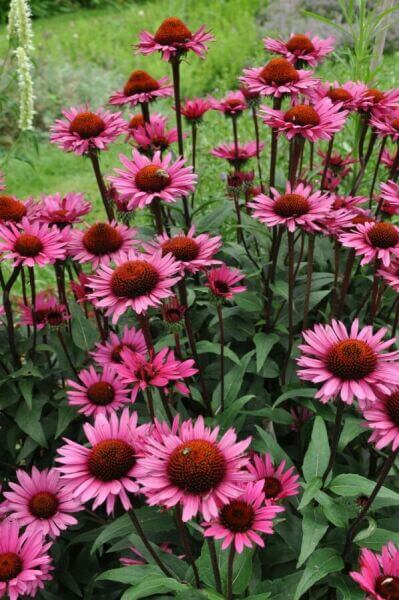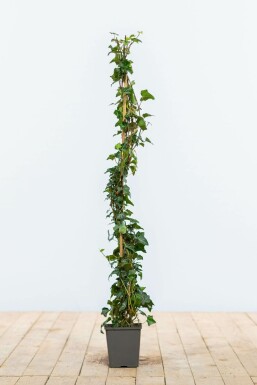Hedge Plants For Garden Rooms
Hedge Plants For Garden Rooms
Blog Article
Hedge Plants For Innovative Gardens
Boost your garden's attraction with rich hedge ranges such as Yew (Taxus), Thuja, Laurel, Photinia, and Bamboo, commemorated for their structural integrity and ecological advantages.
Yew and Thuja offer evergreen protection and winter season durability, while Laurel offers fast growth and broad, aromatic leaves.
Photinia includes seasonal appeal with its vibrant red foliage, and Bamboo provides a low-maintenance, serene ambiance.
These hedges enhance air quality, decrease sound, and produce tranquil, personal spaces.
Correct planting, spacing, and maintenance guarantee energetic development and ecological harmony.
Explore how these rich ranges can raise your garden's charm and well-being.
Secret Takeaways
Transform Your Garden With Lush Hedge Varieties
- Select Yew for its thick, evergreen development and unrivaled durability.
- Go with Laurel for its fast growth and broad leaves, making sure quick privacy.
- Select Photinia for its dynamic seasonal foliage, which turns a striking dark red.
- Make use of Bamboo for a low-maintenance, winter-hardy hedge with visual appeal.
- Area plants 2-3 per meter and prune frequently for optimal growth and health.
Popular Hedge Plants
When transforming a garden with lavish hedge varieties, it's important to consider popular hedge plants such as Yew, Thuja, Laurel, and Photinia due to their special qualities and advantages.
Yew (Taxus) is extremely respected for its durability and thick, green development, making it a prime choice for sustaining landscapes.
Thuja is kept in mind for its evergreen foliage and robust winter season strength.
Photinia includes seasonal vibrancy with red leaves that darken gradually, developing vibrant visual appeal.
Laurel uses fast development and fragrant, broad leaves, perfect for quick privacy.
Additionally, Bamboo is an excellent choice for atmosphere, using a low-maintenance, winter-hardy choice that improves the garden's aesthetic with its classy, swaying walking canes.
These choices cater to a variety of horticultural requirements and choices.
Benefits of Garden Hedges
Garden hedges use a plethora of advantages, making them a valuable addition to any landscape. These natural barriers are economical to execute and provide substantial wind defense, improving air circulation and contributing to noise decrease. The dense foliage of hedges like Thuja and Beech ensures personal privacy by obstructing presence, producing a remote and serene environment.
Hedges also play a vital role in microclimate regulation, supplying a stable environment that cultivates plant growth and decreases temperature variations. Their complex leaf structures filter pollutants, enhancing air quality and contributing to a much healthier garden ecosystem.
Additionally, hedges master sound decrease, taking in and deflecting acoustic waves to lower ambient noise levels. This double functionality of offering both visual and acoustic privacy boosts the overall serenity and visual appeal of any garden.
Planting and Maintenance Tips
For an effective hedge, meticulous preparation of the planting area is vital. Ensure the soil has appropriate pH and drain to support strong root development.
Space the plants properly for the picked species. Water the hedge frequently during its initial development stage, adjusting as needed with seasonal changes.
Execute a organized pest control and disease prevention method, utilizing organic or chemical treatments when necessary. Regularly examine for aphids, termites, and fungal infections.
Apply mulch to maintain moisture and reduce weeds. Seasonal pruning promotes thick growth and air flow, necessary for plant health.
Following these standards will assist you cultivate a lively, well-maintained hedge that enhances the beauty of your garden.
Spacing and Trimming Guidelines
Spacing and Trimming Guidelines
Appropriate spacing and trimming are important for cultivating healthy, aesthetically appealing hedges. Sufficient spacing guarantees each plant gets adequate nutrients, light, and airflow.
Follow these guidelines for ideal hedge maintenance:
- Spacing: Position hedge plants 2-3 plants per meter to encourage robust growth.
- Pruning Strategies: Routine pruning is necessary for keeping preferred hedge height and shape. Cut new growth in summer and cut down older wood throughout winter season.
- Seasonal Care: Adjust trimming schedules and methods according to seasonal requirements to make sure plant health.
- Hedge Height: Routinely screen and trim to preserve the preferred hedge height and achieve uniform aesthetics.
Following these steps will guarantee your hedge grows, boosting both the appeal and functionality of your garden.
Choosing the Right Hedge
Picking the Right Hedge
Choosing the appropriate hedge includes assessing factors such as mature height, foliage density, and ecological durability. Successful hedge plant choice requires understanding each types' growth attributes and site-specific versatility.
For Additional info example, Yew (Taxus) provides excellent durability and dense development, while Thuja is noteworthy for its winter season durability. In addition, considering upkeep requirements is important; fast-growing types like Laurel or Privet demand routine trimming, whereas low-maintenance alternatives like Bamboo or Ivy might be more effective for those seeking very little maintenance.
Environmental aspects such as soil type, light availability, and wetness conditions should also assist the selection process. This mindful approach guarantees the picked hedges will flourish, supplying both aesthetic and functional benefits to the garden landscape.
Shipment and Planting Suggestions
To ensure your hedge plants flourish, they need to be delivered by specialized couriers and planted immediately upon arrival.
Follow these necessary steps for successful planting:
- Soil Preparation: Enhance the soil with natural matter to improve drainage and nutrient content.
- Planting Depth: Produce a trench two times the width and equivalent to the depth of the root ball.
- Watering Strategies: Water thoroughly after planting, keeping the soil consistently damp however not filled.
- Mulching: Apply a layer of mulch to retain moisture and suppress weeds.
Client Support and Service
Given the vital role of timely help in horticultural pursuits, our customer support team is offered 6 days a week through telephone, e-mail, and social networks to use professional guidance and quickly deal with any issues. Their dedication to fast reaction times ensures consumer complete satisfaction by resolving inquiries related to plant health, ideal planting methods, and upkeep schedules.

Within two days
This detailed support group, reinforced by an excellent 9.3/ 10 client rating, highlights our dedication to improving the gardening experience for every client.
Regularly Asked Questions
How Long Does It Take for Hedge Plants to Develop?
Hedge plants normally require one to 3 years to end up being completely developed, with the precise period varying by types and growing conditions.
Effective care throughout this critical period is necessary for robust growth. Consistent watering, watchful weed control, and proper fertilizer application are critical in promoting strong root advancement.
For example, fast-growing species like Laurel might develop quicker, while slower-growing ranges such as Yew may take longer. Diligent upkeep speeds up the establishment process, leading to dense and healthy hedges.
What Are the very best Hedge Plants for Personal Privacy?
The question of the very best hedge plants for personal privacy includes evaluating evergreen and deciduous choices.
Evergreen hedges like Thuja, Laurel, and Cypress supply year-round protection, ensuring continuous privacy.
In contrast, deciduous hedges such as Beech provide seasonal personal privacy, shedding leaves in cooler months.
Secret upkeep tips for privacy hedges include regular trimming, fertilizing in spring, and appropriate spacing-- usually 2 to 3 plants per meter.
Furthermore, constant watering and thorough weed elimination are vital for promoting healthy, dense growth.
Can Hedge Plants Attract Wildlife to My Garden?
Yes, hedge plants can attract wildlife to your garden by providing important benefits like shelter, food, and nesting sites, therefore enhancing local biodiversity. For instance, yew, holly, and laurel are excellent for attracting birds, while ivy supports a range of pests.
However, it is essential to keep in mind that there are some disadvantages, such as increased maintenance to handle bugs and regular upkeep. Thoroughly choosing and maintaining hedge ranges can assist balance these advantages and disadvantages, eventually fostering a lively and sustainable ecosystem in your garden.
Exist Any Blooming Hedge Plants Available?
Yes, there are flowering hedge plants offered that can enhance the appeal of your garden.
For example, Elaeagnus, likewise called Olive Willow, produces aromatic white flowers in the fall, adding a touch of sophistication.
Photinia, another popular choice, showcases vibrant red leaves that develop into an abundant green, producing a vibrant visual impact throughout the seasons.
To make sure these plants flourish, it's vital to practice appropriate pruning strategies and seasonal maintenance, such as cutting brand-new growth in the summer season and cutting back in the winter season.
These procedures will help keep the health and aesthetic appeal of your flowering hedges.
How Do I Avoid Pests in My Hedge Plants?
To prevent insects in hedge plants, use natural pest control techniques and maintain appropriate hedge care. Present advantageous bugs like ladybugs, which victimize harmful insects, to develop a well balanced ecosystem.
Routinely examine your hedges for indications of problem and quickly get rid of any afflicted parts to avoid the spread. Ensure the health of your hedges by applying balanced fertilizers and providing sufficient water.
Make use of mulching to maintain soil wetness and correct spacing to lower plant tension and promote robust development. These practices jointly assist in minimizing pest problems and preserving a healthy hedge.
Conclusion
In essence, selecting the best hedge ranges such as Yew, Thuja, and Laurel can transform any garden into a relaxing haven. These plants provide year-round greenery, enhance aesthetic appeal, and deal useful advantages like noise reduction and wind protection.
Correct planting techniques, precise spacing, constant watering, and seasonal cutting are crucial for ideal growth.
Dependable delivery services and skilled consumer support ensure a smooth experience from purchase to planting, making it easier than ever to elevate your outside area.
Garden hedges offer a plethora of advantages, making them a valuable addition to any landscape. These natural barriers are cost-effective to carry out and offer significant wind defense, improving air circulation and contributing to sound reduction. The thick foliage of hedges like Thuja and Beech ensures personal privacy by obstructing presence, producing a serene and remote environment.

Pruning Strategies: Routine pruning is necessary for keeping wanted hedge height and shape. Cut new growth in summer and cut back older wood throughout winter season.
Report this page